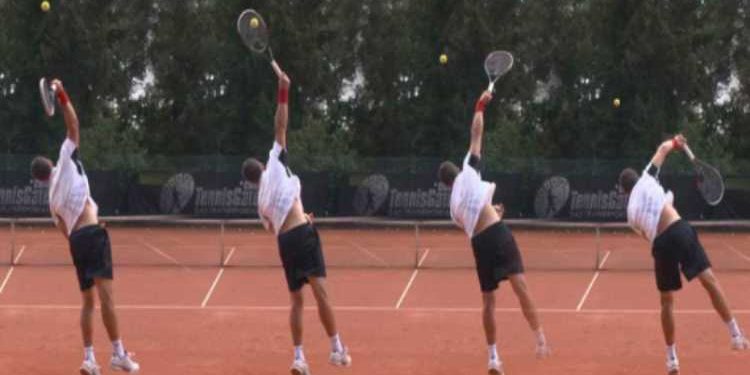The serve is an integral part of tennis; the bad news is that once you’ve served it’s too late to do anything about it. The serve begins at a dot of the bottom black line on the court; the serve begins a point behind the baseline, between the right half and the left half of the net. The ball is initially hit straight up into the air, then angled down so that it will curve in the sky. The serve has a maximum of two points at the net; the serve is made with a racket that is primarily made of racket leather, but it can also be made from metal or composite materials.
Serving is one of the hardest strokes in tennis, it takes enormous physical strength to make an effective service, and then it takes mental strength to be able to continue to serve efficiently after you’ve served it. The serve drills that are most important for a professional player are serves, returns, and forehand drives. The serve drills consist of lots of running around, a lot of footwork, and lots of training for racket grip and stance.
For many players that have had to struggle through their careers, the service is the part of the game they most dread. Many of them spend countless hours pounding on the balls until they’re exhausted; other times they spend hours practicing their serve in anticipation of a big competition. They don’t get the satisfaction of the win until they have mastered the technique that gets them the highest score in the end. The techniques they use for the services are different than the techniques they use for the forehand or backhand shots.
Serving from the top of the court is the most basic technique. This serves the purpose of not only getting the ball back into play but also of keeping the opponent guessing as to your next move. You serve from a standing position; start with your lead foot, place the racket behind your back, and hook the front foot out to the side. Then hook the heel of your lead foot into the ground, so that you hook the ball back into the ground. This serves to create the much sought-after foreward shot!
Another popular technique is the bounce serve; this serves the purpose of getting the ball to return immediately, but without knocking your opponent off balance and out of the game. You should hit the ball in an upward direction toward the net. To begin the bounce serve, move your lead foot toward the front door of the court. Your opponents will be expecting this move, so block it by raising your shoulders. As the serve passes over your opponent’s head, they should still be expecting the bounce but should have enough time to adjust themselves.
A bank shot is another technique to try in tennis. If you hit a ball too hard, your opponent may be able to return it. If you don’t hit the ball too hard, however, you can give them a chance to return it for a reversal or break. It’s important to note that a bank shot should always come from a short distance away from the net.
A forward hit, which is like a forehand in tennis, is a hit that comes toward the ball. The player does this before their opponent has the chance to swing and hit the ball. While it is often the first move you make in a tennis game, it is important that the serve hits the ball at the correct velocity for maximum effectiveness. When serving, if you are hitting the ball too hard, the opponent could run up and hit it back!
As you can see, there are many different techniques that a player can use to serve in tennis. Some players choose to specialize in one technique or the other, while others work on all three. There are no real restrictions on what kind of service you can do. As long as you are able to send the ball to your opponent, you will be considered to have done a good job!






























